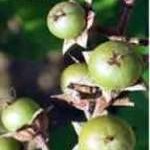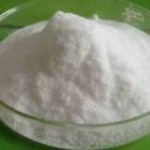Signal transducer and activator of transcription-3 (STAT3) protein is a member of the STAT family of transcription factors which are initially located in the cytoplasm in their inactive form. STAT proteins are part of a group that is sometimes called DNA- binding factors. These proteins bind to DNA sequences, and therefore control the transcription of information from DNA to mRNA. A variety of growth factors and cytokines activate STAT3 by phosphorylating the tyrosine residue in the STAT3 transactivation domain. Phosphorylated STAT3 (p-STAT3) then translocates into the nucleus and induces the expression of a wide variety of target genes involved in tumorigenesis.
Tumor cells depend on STAT3 for continued rapid growth and avoidance of apoptosis. STAT3 is constitutively activated in a wide variety of tumours, including colorectal cancer, liver cancer, breast cancer, prostate cancer, multiple myeloma, and glioblastoma. Perhaps half or more of human tumors contain persistently active STAT3. Persistently activated STAT3 and, to some extent, STAT5 increase tumour cell proliferation, survival and invasion while suppressing anti-tumour immunity.
STAT3 as a central mediator of neoplastic cellular transformation.
Crosstalk between cancer and immune cells: role of STAT3 in the tumour microenvironment.
Regulation of the innate and adaptive immune responses by Stat-3 signaling in tumor cells.
Role of STAT3 in Transformation and Drug Resistance in CML.
STAT3 also mediates tumor-promoting inflammation.The nuclear factor NF-kB is a master regulator of the immune response. NF-kB can also contribute to malignant development and promote the growth and survival of cancer cells. Both NF-kB and STAT3 are regulated by entirely different signaling mechanisms. Once activated, NF-kB and STAT3 control the expression of anti-apoptotic, pro-proliferative and immune response genes. The activation of and interaction between STAT3 and NF-kB plays a key role in controlling the dialog between the malignant cell and its microenvironment, especially with inflammatory/immune cells that infiltrate tumors.
Dangerous liaisons: STAT3 and NF-kappaB collaboration and crosstalk in cancer.
Persistently activated Stat3 maintains constitutive NF-kappaB activity in tumors.
STAT3 activity has an important role in establishing the addiction of tumor cells to glycolytic energy derivation and attendant glucose dependence, “the Warburg effect”. Hypoxic tumor cells depend on glucose and glycolysis to produce energy. This preference is normal in oxygen-poor environments. HIF-1 (Hypoxia-inducible transcription factor-1) is a master regulator of hypoxia- induced gene responses. Hypoxia and HIF-1 increase virtually all the enzymes in the glycolytic pathway, as well as the glucose transporters 1 and 3 (GLU1, GLU3). STAT3 is required for both basal and growth signal-induced expression of HIF-1. Furthermore, STAT3 regulates expression of Akt, which is required for growth signal-induced HIF-1 upregulation. Thus, inhibition of STAT3 expression could be a potent therapeutic approach in cancer treatment.
A STAT3-mediated metabolic switch is involved in tumour transformation and STAT3 addiction.
Effects of hypoxia and HIFs on cancer metabolism.
 Banaba (Lagerstroemia speciosa L.) is a flowering plant that grows in warm climate like the Philippines, India and others. Banaba extracts have been used for many years in folk medicine to treat diabetes and kidney conditions. Corosolic acid, or glucosol, is an active compound that was isolated from the banaba leaves. It is a pentacyclic triterpene and inhibits glycogen phosphorylases. Triterpenoid glycosides have a wide range of medical effects, including antitumor, antihypertensive, antimicrobial, antioxidant, anti-inflammatory, antidiabetic and anticholesterol. Corosolic acid is also found in almond hulls, weigela subsessilis, perilla frutescens, campsis grandiflora and other herbs.
Banaba (Lagerstroemia speciosa L.) is a flowering plant that grows in warm climate like the Philippines, India and others. Banaba extracts have been used for many years in folk medicine to treat diabetes and kidney conditions. Corosolic acid, or glucosol, is an active compound that was isolated from the banaba leaves. It is a pentacyclic triterpene and inhibits glycogen phosphorylases. Triterpenoid glycosides have a wide range of medical effects, including antitumor, antihypertensive, antimicrobial, antioxidant, anti-inflammatory, antidiabetic and anticholesterol. Corosolic acid is also found in almond hulls, weigela subsessilis, perilla frutescens, campsis grandiflora and other herbs.
The beneficial effects of banaba and corosolic acid with respect to various aspects of glucose and lipid metabolism appear to involve multiple mechanisms. These effects may be mediated by PPAR, MAPK, NF-κB, STAT3 and other signal transduction factor. Corosolic acid directly inhibits activation of STAT3 and NF-kB. The following study shows that corosolic acid inhibits glioblastoma cell proliferation by suppressing the activation of STAT3 and NF-kB. Glioblastoma is one of the most common and fatal types of primary brain cancer. Combination of surgery, radiotherapy, and chemotherapy results in survival of approximately 14 months. Herbalzym Vinegar contains the purest, most highly bioavailable corosolic acids.
A review of the efficacy and safety of banaba (Lagerstroemia speciosa L.) and corosolic acid.
Breaking the NF-κB and STAT3 alliance inhibits inflammation and pancreatic tumorigenesis.
 Gamma-Tocotrienol, a member of the Vitamin E, and glucosamin are also potent novel inhibitors of constitutive and inducible STAT3 signalling pathway. STAT3 is active when the cell attaches a phosphorus group to the Tyr705 piece of that protein. Glucosamine hampers this process. Persistent activation of stat3 signaling induces survivin gene expression and confers resistance to apoptosis. The expression of apoptosis inhibitor survivin is well known target of STAT3. Glucosamine suppresses the expression of survivin by inhibiting STAT3 pathway.
Gamma-Tocotrienol, a member of the Vitamin E, and glucosamin are also potent novel inhibitors of constitutive and inducible STAT3 signalling pathway. STAT3 is active when the cell attaches a phosphorus group to the Tyr705 piece of that protein. Glucosamine hampers this process. Persistent activation of stat3 signaling induces survivin gene expression and confers resistance to apoptosis. The expression of apoptosis inhibitor survivin is well known target of STAT3. Glucosamine suppresses the expression of survivin by inhibiting STAT3 pathway.
Glucosamine is a compound found naturally in the body, made from glucose (sugar) and the amino acid glutamine. Glucosamine is needed to produce glycosaminoglycan, a molecule used in the formation and repair of cartilage and other body tissues. Production of glucosamine slows with age. American epidemiologists announced that glucosamine users were less likely to develop lung and intestinal cancer and also lived longer.
D-glucosamine inhibits proliferation of human cancer cells through inhibition of p70S6K.
Silibinin, the major active constituent of silymarin, also inhibits constitutive activation of STAT3.